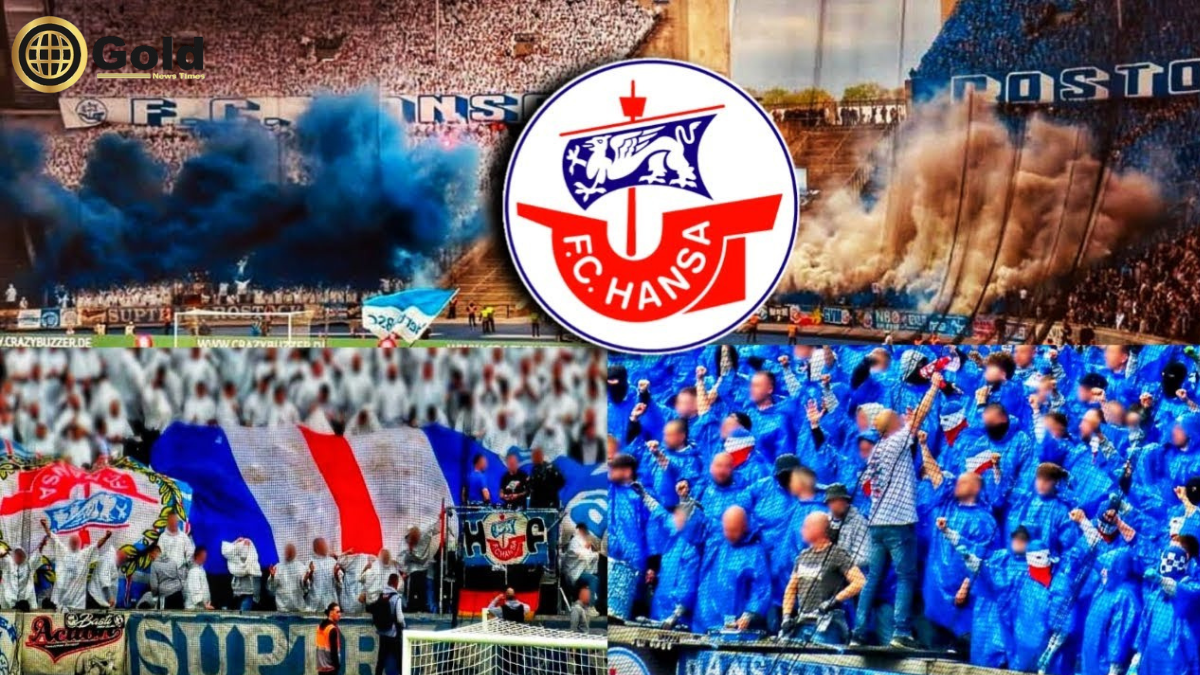Hansa Rostock: A Legacy of Resilience and Passion in German Football

Table of Contents
Hansa Rostock, a name synonymous with pride, history, and passion, holds a special place in the hearts of football fans not only in Germany but also across Europe. This club, based in Rostock, Mecklenburg-Vorpommern, has had its fair share of highs and lows, but it continues to be a beloved institution in the world of football. Despite its ups and downs, the club has remained resilient, a testament to the unwavering dedication of its supporters and its deep-rooted football culture.
From its beginnings to its rise to prominence in the 1990s, Hansa Rostock has faced a series of challenges, from relegation battles to financial hurdles, yet the club has managed to retain its identity and a loyal fanbase. Let’s take a closer look at Hansa Rostock’s journey, its cultural significance, and the unforgettable moments that make it a fixture in the world of German football.
The Early Years: Foundations of Hansa Rostock
Hansa Rostock’s origins date back to 1965 when it was founded as a merger of several local football teams. The club was initially known as “FC Hansa Rostock,” reflecting the importance of its location in the port city of Rostock, which had been a central hub for maritime trade in northern Germany for centuries. It was during this early period that the club began to lay the groundwork for what would become an iconic journey through the ranks of German football.
In its initial years, Hansa Rostock played in the lower tiers of East German football, slowly making a name for itself with a strong work ethic and a passionate fanbase. However, the true breakthrough came in the 1970s when Hansa Rostock began to establish itself in the DDR-Oberliga, the top tier of East German football. The team’s first real taste of success came in the 1977-78 season when they finished a respectable sixth in the league, signaling the emergence of a force to be reckoned with.
The club’s status as a competitive team within East German football would soon be solidified, but it wasn’t until the fall of the Berlin Wall and the reunification of Germany that Hansa Rostock’s journey truly entered a new chapter. The end of the division between East and West brought forth both new opportunities and fresh challenges.
The 1990s: Hansa Rostock’s Golden Era
The 1990s marked a significant turning point for Hansa Rostck, as the club began to thrive in a unified Germany. After the fall of the Berlin Wall in 1989, German football underwent a massive transformation, and Hansa Rostock was no exception. The club had the unique opportunity to compete in the newly formed Bundesliga, Germany’s top-flight league, following reunification.
Hansa Rostock’s entrance into the Bundesliga in 1991 was a historic moment for the club, as it became one of the first teams from East Germany to join the prestigious league. This was a remarkable achievement, given that many East German clubs struggled to find their footing in the unified German football landscape. Despite financial challenges and limited resources compared to their West German counterparts, Hansa Rosock managed to compete at a high level, earning respect for their gritty performances and passionate supporters.
The team’s most memorable season came in 1995, when they finished in a commendable 5th place in the Bundesliga. This achievement catapulted the club to national attention, as they were now considered a force to be reckoned with. Players like Andreas Thom, one of the club’s most influential figures during the 1990s, played pivotal roles in the team’s success. Hansa Rostock’s remarkable run in the Bundesliga helped solidify their place in German football history.
The success of the 1990s was not just a testament to the team’s footballing ability, but also to the power of its supporters. The “Hasa Rostock Ultras,” as the passionate fan group is known, became an integral part of the club’s identity during this period. Known for their unwavering loyalty and vocal support, the Ultras helped create an electric atmosphere at the club’s home ground, the Ostseestadion. Hansa Rostock’s success was as much about the fans as it was about the players.
Relegation Struggles and Resilience
While Hansa Rock enjoyed its golden years in the 1990s, the years that followed brought a series of challenges. The club faced relegation battles throughout the 2000s and early 2010s, and in many ways, it reflected the larger struggles faced by clubs with limited financial backing. However, even in the face of adversity, Hansa Rost’s resilience was never in question.
One of the most difficult moments in recent history for the club came in 2009, when Hansa Rostock was relegated from the Bundesliga. The club had been unable to keep up with the competition in Germany’s top league, and after a series of disappointing seasons, they found themselves in the 2. Bundesliga, the second division of German football. Despite the setback, the club’s management, players, and supporters refused to accept defeat. They viewed relegation as just another challenge to overcome.
The years that followed saw Hansa Rostock’s steady climb back up the ranks of German football. Although they had their fair share of setbacks, including near-relegations from the 2. Bundesliga, the club remained determined to return to the top-flight Bundesliga. The story of Hansa Rstock in this period was one of resilience, where the passion and unity of the fans played an even more vital role in helping the team through tough times.
It wasn’t just the players who demonstrated resilience, but the supporters as well. Hansa Rostok’s fanbase stood by the team through thick and thin, providing much-needed motivation for the players during difficult periods. The supporters’ loyalty helped create an unbreakable bond between the fans and the club, and it remains one of the most defining aspects of Rostock’s legacy today.
The Hansa Rostock Ultras: A Culture of Loyalty
No discussion of Hansa Rostock would be complete without acknowledging the role of the Ultras. The “Hansa Rostock Ultras” are among the most dedicated and passionate supporters in German football. Known for their colorful displays, chants, and unwavering loyalty, the Ultras are the lifeblood of the club, creating an atmosphere that is second to none at the Ostseestadion.
These supporters play a huge role in the club’s identity, and their presence is felt at every match. Whether it’s a high-stakes Bundesliga clash or a tough 2. Bundesliga battle, the Ultras are always there, singing and chanting throughout the 90 minutes. Their presence is a constant reminder of the club’s deep-rooted connection with its fanbase and the city of Rostock itself.
The Hansa Rotock Ultras have a reputation for being fiercely loyal, and their love for the club extends beyond the football pitch. This loyalty is evident in their dedication to supporting the team through thick and thin, even during the club’s most difficult periods. Their energy, commitment, and passion make them one of the most powerful fan groups in German football.
Looking Ahead: The Future of Hansa
As Hansa Rostock moves forward into the future, the club faces the challenge of returning to the Bundesliga and continuing its legacy of resilience. With a mix of young talent and experienced players, the team is well-positioned to make a strong push for promotion in the coming years. The club’s commitment to developing talent from within its youth system will be key to ensuring long-term success.
The future of Hansa Rostock will likely be shaped by both footballing developments and the continued involvement of its fans. The unwavering support of the Ultras, combined with smart management and strong performances on the pitch, could well see the club return to the heights of the Bundesliga in the near future.





